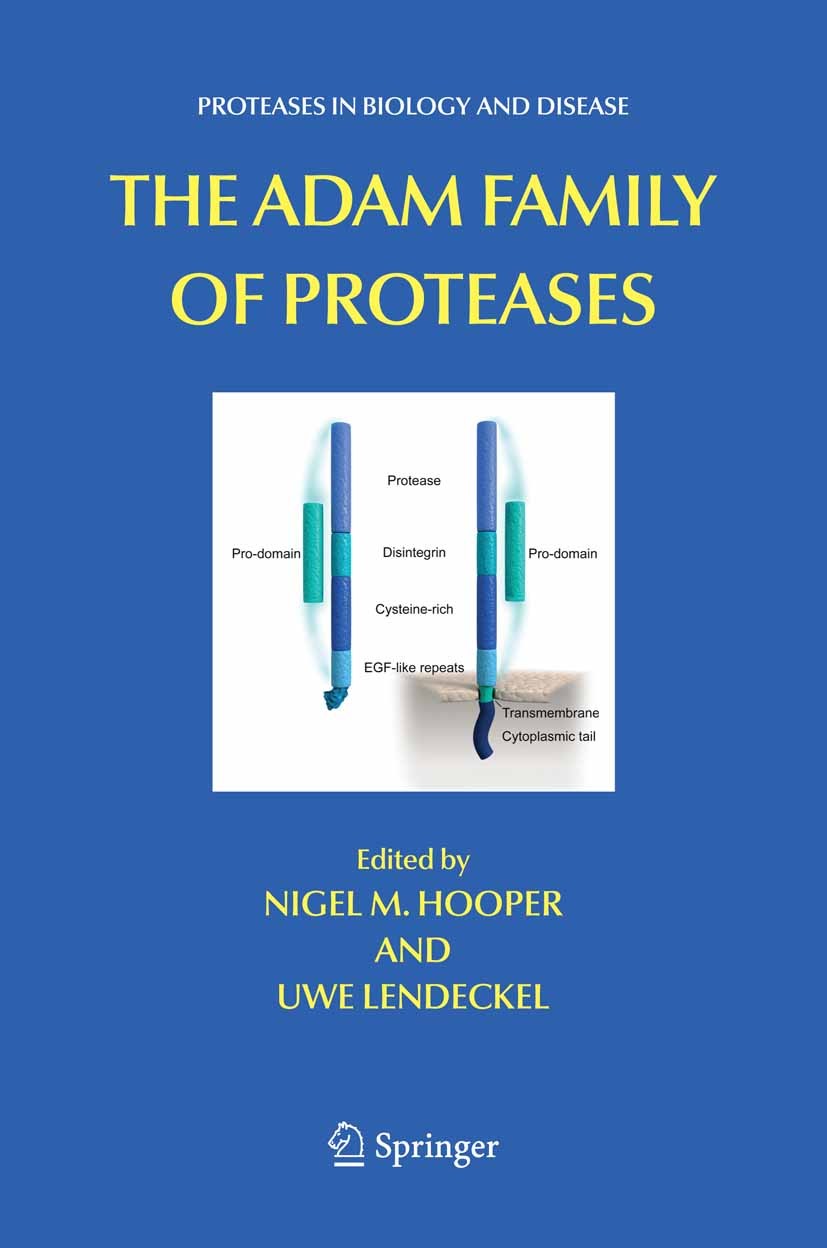| 书目名称 | The ADAM Family of Proteases |
| 编辑 | Nigel M. Hooper,Uwe Lendeckel |
| 视频video | http://file.papertrans.cn/904/903943/903943.mp4 |
| 概述 | The ADAM Family of Proteases will be a timely and useful source of information both for those immersed in the field and those just entering this exciting and rapidly expanding field of research. The i |
| 丛书名称 | Proteases in Biology and Disease |
| 图书封面 |  |
| 描述 | .The ADAM Family of Proteases provides the first comprehensive review of the roles of ADAMs and the related ADAMTS proteases in biology and disease. Although a few members of the ADAM (a disintegrin and metalloprotease) family have been known for some time, it is only in recent years through advances in genome sequencing that the large size of this family of zinc metalloproteases has become apparent. These proteins have multiple domains including a protease domain and a disintegrin domain. A branch of the family, called ADAMTS, also have thrombospondin-like motifs. The role of ADAMs and ADAMTS members in a diversity of biological processes is gradually coming to light. For example, some ADAMs have critical roles in the ectodomain shedding of membrane proteins including tumour necrosis factor-a, the cell signalling molecule Notch and the Alzheimer’s amyloid precursor protein. Other ADAM and ADAMTS family members have key roles to play in sperm function and fertility, collagen processing, development, cardiac hypertrophy and arthritis. . |
| 出版日期 | Book 2005 |
| 关键词 | biology; genome; protein; proteins; sequencing |
| 版次 | 1 |
| doi | https://doi.org/10.1007/b106833 |
| isbn_softcover | 978-1-4419-3775-9 |
| isbn_ebook | 978-0-387-25151-6 |
| copyright | Springer-Verlag US 2005 |
 |Archiver|手机版|小黑屋|
派博传思国际
( 京公网安备110108008328)
GMT+8, 2025-11-16 02:35
|Archiver|手机版|小黑屋|
派博传思国际
( 京公网安备110108008328)
GMT+8, 2025-11-16 02:35


